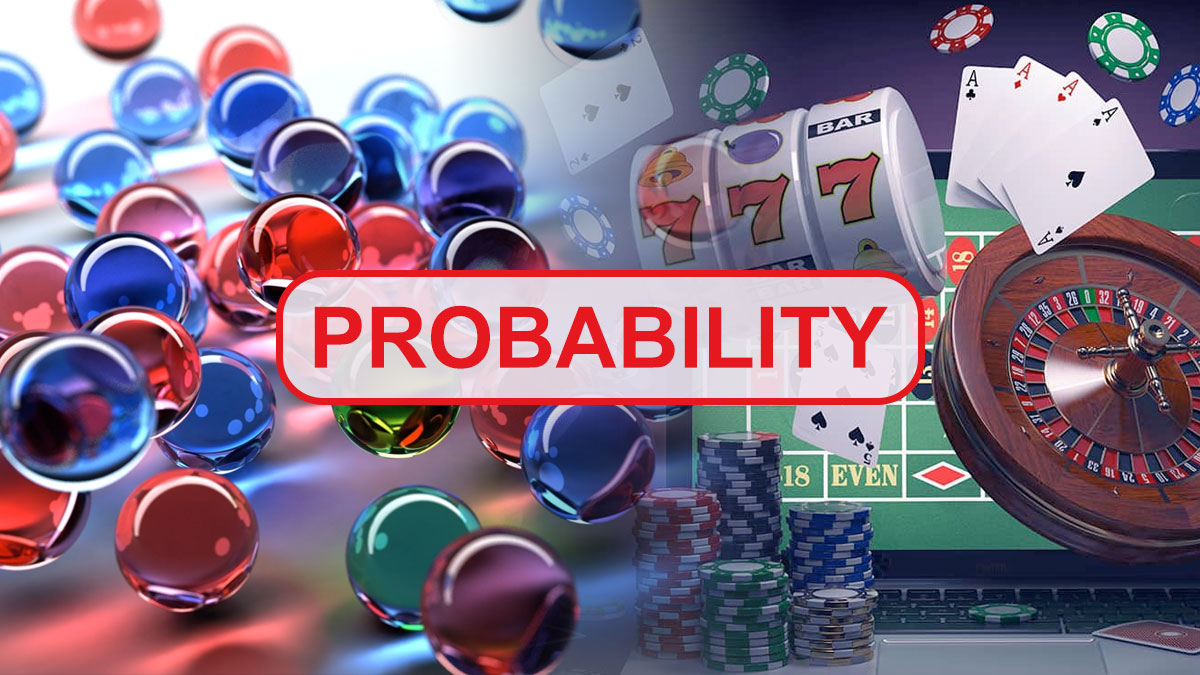One of the best explanations I’ve ever read about probability and the house edge used marbles to illustrate some important points. I’m going to use this post to explain how different colored marbles could be used to create a simple casino game.
It’s also a great illustration of how probability and the house edge works.
I’ll cover several important concepts in this post and draw analogies between marble games and gambling.
A Hypothetical Casino Game Using Different Colored Marbles
Let’s suppose you’re running a low-rent local underground casino, and you need to come up with a cheap game. You buy a bunch of red and black marbles along with a paper bag to put them in.
For the purposes of this illustration, we’ll say that you have 15 marbles in total. Nine of them are black, and six of them are red.
Also, the marbles need to be the same size and weight, or you won’t have a random game. The reason for this should be apparent.
The player gets to reach into the bag and choose a marble without looking.
But first, the player must bet on red or black.
Finally, the payouts for the bets on red or black are as follows:
- A bet on black pays off at 7 for 5
- A bet on red pays off at 3 for 1
If you understand some basic probability math, it’s easy to see which bet you should make and why.
Here’s how you figure that out.
The First Step Is Always to Calculate the Probabilities of the Outcomes
In this hypothetical casino game of marbles, you have two possible outcomes:
- A black marble
- A red marble
We’re going to calculate the probability for both events and express that probability in multiple formats for illustrative purposes.
The probability of an outcome is just the number of ways you can achieve that outcome compared to the total number of outcomes.
In other words, to get the probability of choosing a black marble, you divide the number of black marbles by the total number of marbles.
And in this case, you have nine blackjack marbles out of a total of 15 marbles, so the probability is 9/15.
As with any fraction, you can reduce that fraction. In this case, 9/15 reduces to 3/5.
That’s how you’d express the probability of getting a black marble in fraction format, 3/5.
But you could also express this probability as a percentage of 60%.
A common way to present this would be as the odds against it happening, which are 6 to 9, which can be reduced to 2 to 3 odds.
The other outcome to calculate for is the probability of getting a red marble. Since you have six red marbles, that probability is 6/15, or 2/5.
That’s 40% when expressed as a percentage, and it’s 3 to 2 odds.
One way you can double-check your work when calculating probabilities is to remember that the total probability of all the possible outcomes is always 100%.
Since 60% + 40% = 100%, I’m confident that I got my math right.
Also, 3/5 + 2/5 =5/5, which is also 100%, so that’s right, too.
The Second Step Is to Calculate the Expected Value
The expected value is how much you mathematically expect the value of a bet to bet over the long run. Expected value is usually negative for a casino bet. If you’re betting $100 on most casino games, your mathematical expectation is to lose an average of $1 to $5 on that bet, making the expected value for the bet between $95 and $99.
It’s easy to calculate.
Let’s start with the expected value of a blackjack bet. The first thing you should notice is that the payout odds are expressed as 7 “for” 5, NOT 7 “to” 5.
Generally, when a casino table game pays off, it pays off at “to” odds. That means if you win, you get your bet back along with your winnings.
Most gambling machines pay off at “for” odds. This means that if you win, you get the total amount you won, but you don’t get back your bet.
If a bet pays off at 2 for 1, you make a profit of one unit.
If a bet pays off at 2 to 1, you make a profit of two units.
It’s an important distinction you should learn to make.
With a 7 for 5 payoff, you’ll see a profit of two units when you win that bet.
To calculate your expected value, you merely multiply how much you expect to profit by the probability of winning. You then multiply how much you expect to lose by the probability of losing. Add the two together, and you have the expected value of the bet.
In this case, if you bet on black and win, you see a profit of +2.
If you bet on black and lose, you see a profit of -5.
The probability of winning is 60%, and 60% multiplied by +2 is +1.20. T
he probability of losing is 40%, and 40% multiplied by -5 is -2.
Add the two together, and you get -0.8.
Since you’re betting five units, you’re expecting to lose 0.8 divided by 5 on each bet, or 0.16%.
This is the house edge for that bet, which is actually pretty good compared to the house edge for other casino games. Bet on black in roulette, and you’ll face a house edge of 5.26%.
What About the Expected Value of a Bet on a Red Marble?
We can perform the same calculations for a bet on a red marble to see what the expectation is.
Since this bet pays off at 3 for 1, you’ll see a profit of two units when you win.
But you’ll see a loss of one unit when you lose, instead of a loss of five units.
You have a 40% probability of winning two units, which is +0.8.
You have a 60% probability of losing one unit, which is -0.6.
This means that a bet on red has an expectation of +0.2.
In other words, you’re running a game where a gambler could profit in the long run just by betting on the red marble every time.
Most Gamblers Would Bet on Black, Though
Most gamblers don’t understand the math behind expectation well at all, so they’re more likely to bet on black because it’s more likely to win. But in the long run, you’ll lose money consistently by placing that bet instead of the bet on red.
Also, if you’re running a casino, and you design a casino game where one of the bets has a positive expectation for the player, you won’t be in business long at all.
This is one of the reasons why casinos are such hard cases when it comes to card counters. It’s impossible to stay in business as a casino if you’re offering bets where the players can get a mathematical edge.
If you gamble at most standard real money casinos, you probably won’t ever come across a situation like this. The math is just too easy to figure out. This isn’t to say that you can’t find the occasional casino making the rare mistake by offering a game with an edge for the player.
But I will say that when a casino does make such a “mistake,” the math behind it is more complicated than that, and only the most perceptive, on-the-ball gamblers will notice.
What Does This Have to Do With Marble Racing?
If you search in the major search engines for anything having to do with “marbles” and “gambling,” you’ll probably come across articles about something called “marble racing.”
The subject of this post really has nothing to do with marble racing.
“Marbula One” is a game that gambling companies have launched to give sports bettors something to bet on when college and professional sports are on hold.
The races basically involve marbles that roll down a track. A conveyor belt returns said marbles to the beginning of the track so that they can complete multiple laps, just like cars do in Formula One. Of course, the cars in Formula One just drive around in big circles. They don’t need a conveyor belt.
You can watch marble races on YouTube, where the so-called sport has become a viral sensation.
I’m not familiar enough with the intricacies of marble racing to explain how the odds work. It would seem that the odds were completely random, but that doesn’t seem to be the case based on the payout odds for the bets available.
Still, it’s a fun replacement for traditional sports betting.
Conclusion
Marbles can be useful for illustrating some of the basic concepts behind probability in betting. Whether you’re interested in expected value or the house edge, converting the situation into one with different colored marbles can help you visualize the math behind the gambling game.
Michael Stevens
Michael Stevens has been researching and writing topics involving the gambling industry for well over a decade now and is considered an expert on all things casino and sports betting. Michael has been writing for GamblingSites.org since early 2016. …



